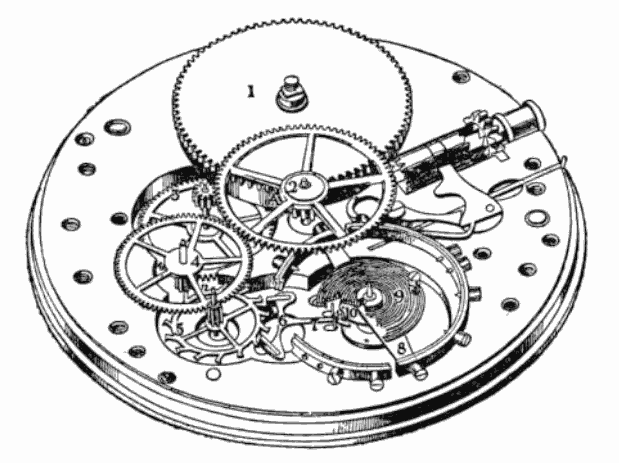May 19
Quartz vs. Automatic Watch Movements

What’s the difference between quartz and automatic watch movements? In this article, we’ll be discussing the history of quartz and automatic watch movements, as well as their differences and what makes each unique. Before quartz movements were introduced, watches had manual or automatic movements - but the newer, more accurate quartz movements threatened their future. How, then, did automatic movements prevail, even to this day? We’ll answer that here.

Quartz Watch Movements
The Quartz Crisis
Created in 1969, the revolutionary quartz movement ushered in an unprecedented era for the watchmaking industry. The Quartz Crisis of the 70s and 80s decimated the Swiss watch industry and brought brands to their knees. The quartz movement was more accurate, cheaper, and faster to produce than any manual or automatic movement the world had seen before. This, mixed with the fact the technology was new at the time, sent customers flocking from Swiss brands to their Japanese competitors.

Quartz Movements: Their History
In 1960, Bulova released their Accutron model. This watch used a precursor to the quartz movement by passing a current through a tuning fork. It used this tuning fork to replace the traditional timekeeping element, the balance wheel. As the tuning fork would oscillate at a known frequency of 360 Hz, it would divide every second into 100 equal parts. This yielded accuracies of +/- 2 seconds a day.

Not to be outdone by Bulova, Japanese engineers at Seiko released the first authentic quartz movement in 1969. The movement was in the Seiko Astron, and while the watch was the same price as a family car, the demand was so high for it at the time that Seiko sold 100 units in its first week.

In 1970, a consortium of twenty top Swiss brands called the Centre Electronique Horloger (CEH) released their first quartz movement, the Beta 21, in an attempt to remain relevant. The Beta 21 appeared in watches such as the Rolex Oysterquartz, Omega Electroquartz and the Patek Philippe 3587, just to name a few. Watches with the Beta 21 are now highly collectable.

How does a Quartz movement work?
Quartz movements work by passing an electrical current from a battery through a quartz crystal. The electrified crystal vibrates at an exact frequency which is then used to oscillate the movement and drive the motor. As the frequency is known, the quartz movement will know to move the second hand once the crystal has oscillated a certain amount of times.
Automatic Watch Movements
How does an Automatic movement work?
Automatic movements, and their manual counterparts, work by storing energy in a mainspring and releasing that energy over time. Energy goes through the mainspring, into the barrels, then to the gear trains thus powering the movement. Gear trains feed energy to the escapement which is used to feed equal amounts of energy to the balance wheel, which is the timekeeping element. As the balance wheel will then oscillate at a constant frequency, it can be used to measure time. Some movements have faster oscillating balance wheels. The quicker they are, the more accurate they are, typically.

How are Automatic and Manual movements different?
Automatic movements and manual movements are what is known as a mechanical movement. They operate identically but with one change. Automatic movements use a weight that moves when the watch wearer’s wrist moves, to wind the mainspring and store energy. Manual movements must be wound by the wearer, typically through the crown. Manual movements predate automatic movements and are sometimes preferred by purists.
Quartz vs Automatic. Which is better?
In the eyes of most watch enthusiasts, quartz movements are not as impressive as automatic movements. Quartz movements, however, do provide some advantages over mechanical movements. As the quartz crystal’s vibration frequency is essentially fixed, quartz movements are much more accurate than automatic movements. They are also cheaper to buy, and with only a battery change to worry about every few years, are much less expensive to own and maintain.
Automatic movements represent a pinnacle of micro engineering. They are aesthetically beautiful, sophisticated, and something that can be appreciated by anyone no matter their level of knowledge about them. Look through the display case back of a watch and just try not to be mesmerized by what is going on. In today's technological age, an automatic movement is something of beauty that has not been overtaken by technology. While quartz and automatic movements are typically looked upon as rivals, they are truly allies. They have both had their fair share of breakthroughs and have both advanced our understanding of engineering, time, and how to best display it on those little things we call watches.
May 19
All postsFeatured Posts

December 14
What to Buy as a Christmas Gift This Year (For Watch Collectors)

November 13
Cartier Santos 100 XL: The Path to New Heights

March 27